Nara’s Hase-dera Temple: A Vast Temple Complex Hidden in the Mountains
2022/07/29
Located in a scenic a mountain valley just east of the Nara Basin, Hase-dera is one of Nara’s largest temple complexes and is the headquarters of the Buzan sub-sect of Shingon Buddhism. It makes for a great day trip destination from neighboring locations like Nara City, Osaka, or Kyoto as it is easy to access by train and not too far away from other popular sightseeing spots in the area. There are also good options for staying the night in the local cities of Sakurai, Kashihara, and Tenri.
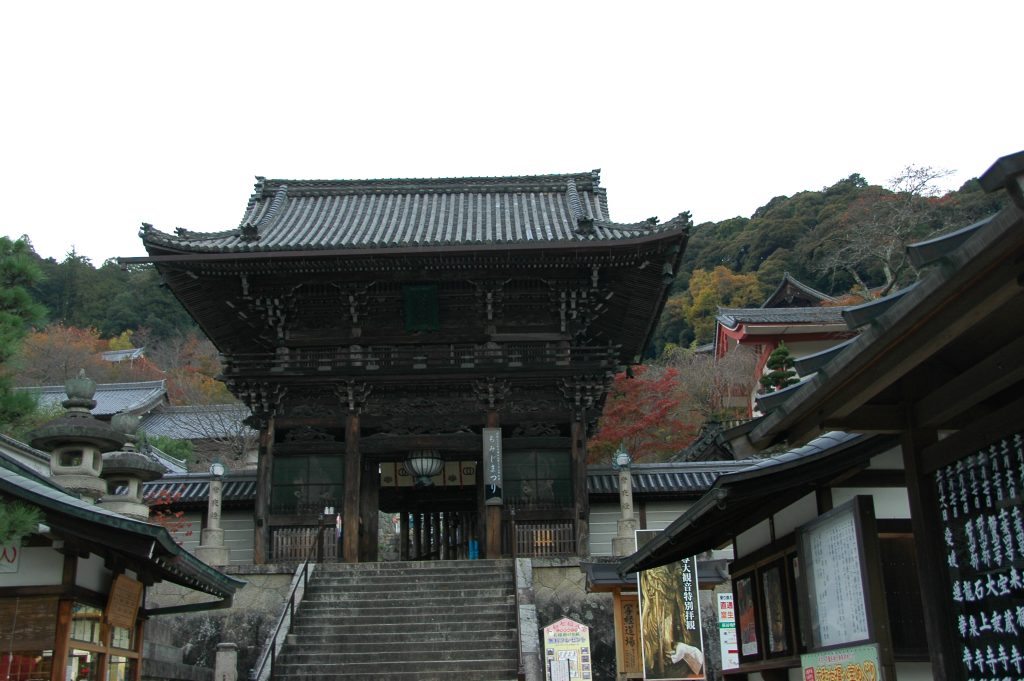
Front gate of Hase-dera. This type of gate, known as “Nio-mon” in Japanese, are a common sight at temples throughout the country and typically feature 2 fierce-looking guardian deities to the right and left of the entrance.
History
Hase-dera is recorded to have been founded in the year 686 CE, making it one of the oldest Buddhist institutions in the country.
The temple is said to have been dedicated to Emperor Tenmu, the first contemporaneously named Emperor of Japan. It’s main object of worship is a massive, wooden statue of the Buddhist deity Kannon Bosatsu that is over 10 meters tall in height. Legend says that the tradition of enshrining a huge Kannon statue here started with a monk who discovered a giant tree in the forest nearby the temple and decided to carve it into an image of the beloved Goddess of Mercy. The tree was so big that a 2nd statue of Kannon ended up being made as well, but was cast into the ocean with the hopes that it would go where it was needed. It is said that the statue ended washing up in Kamakura, where a 2nd Hase-dera Temple was built to enshrine the statue for veneration that still stands to this day.
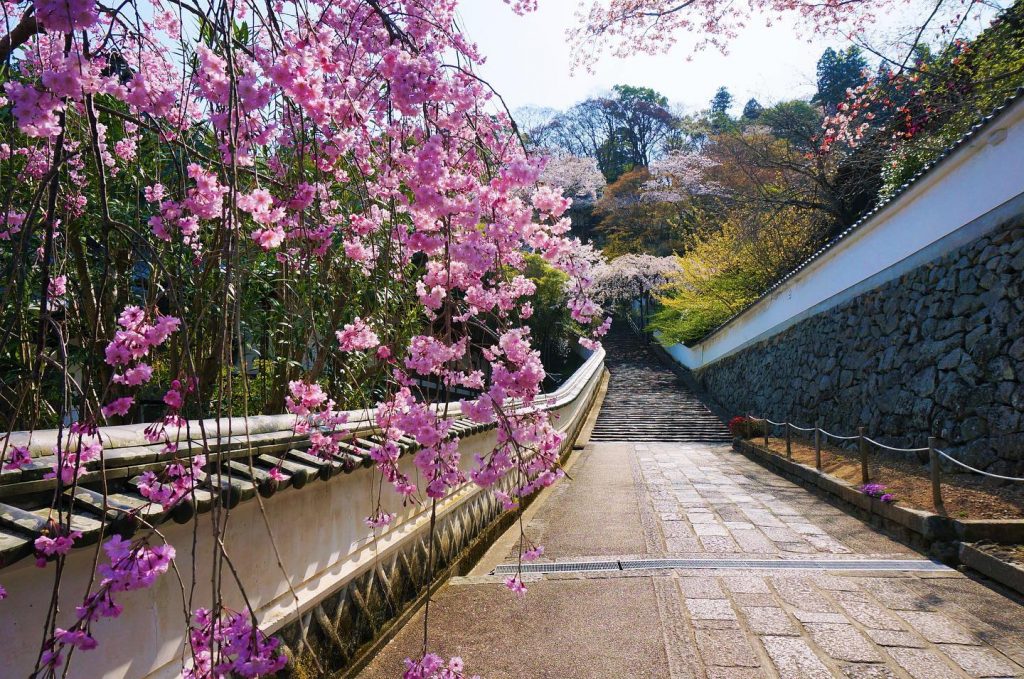
The temple is not only famous for its history and Buddhist treasures, but also beautiful scenery that changes with the seasons, including various types of flowers and fiery fall colors. In fact, there are so many different types of flowers that bloom here that Hase-dera is actually nicknamed “The Flower Temple.”
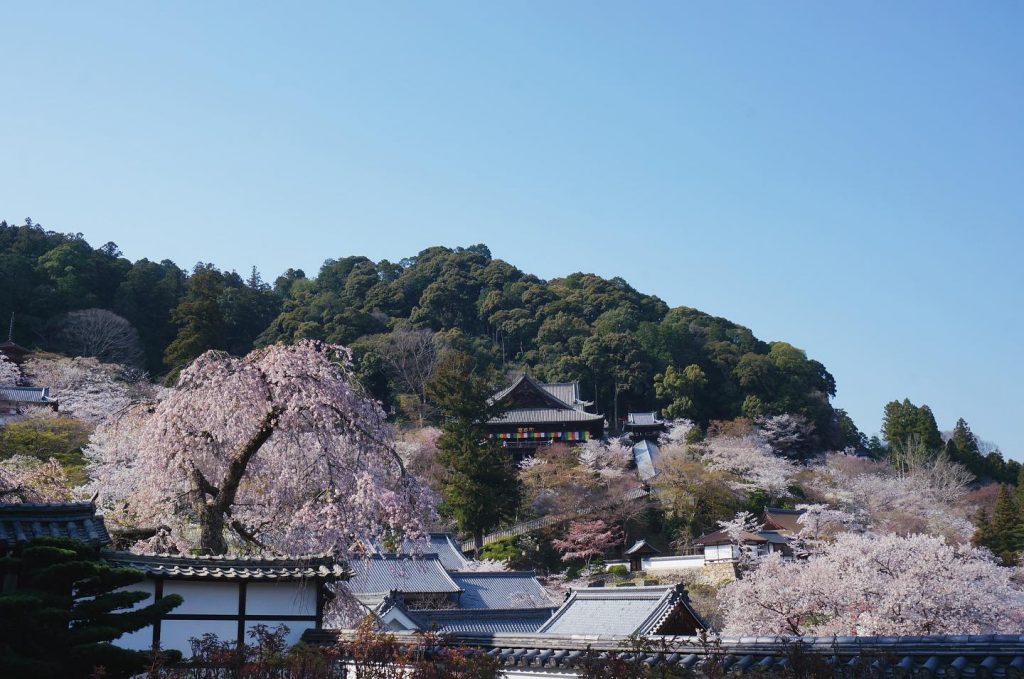
Sakura blooming around the temple complex in the spring.
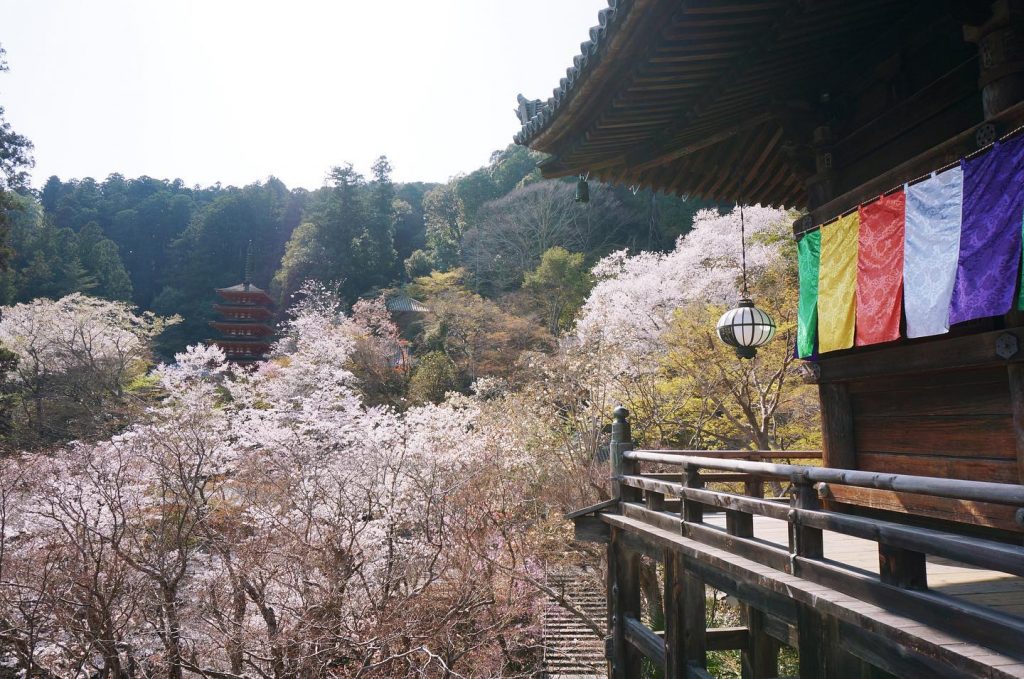
View from the deck of the Main Hall.
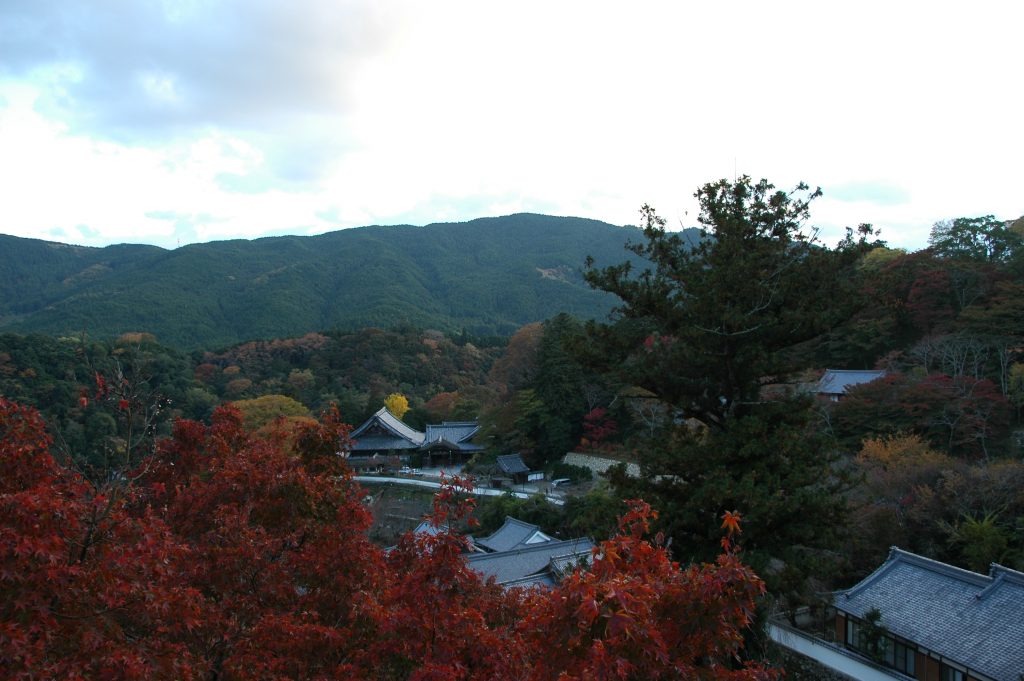
Fall colors at Hase-dera.
After paying the entrance fee, you’ll pass through the front gate and immediately notice a long covered stairway that traverses nearly the entire complex, connecting the entrance to the Main Hall. Part of the charm of visiting Hase-dera is exploring all the different pathways and finding new viewpoints of the beautiful architecture and surrounding mountain landscape.
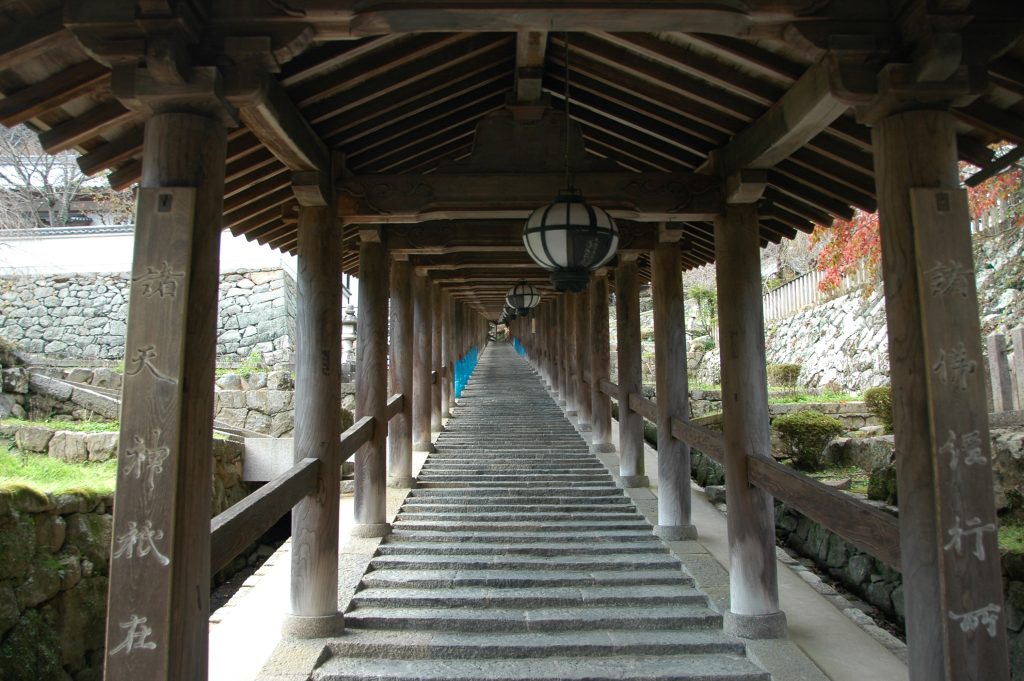
Long covered stairway (399 steps!) that starts at the temple’s front gate and goes up to the Main Hall.
Whatever route you decide to take through the complex, the views of the surrounding landscape from the Main Hall are definitely the highlight and worth the climb up the 399 step-long central stairway. You can also choose to enter the main hall to view the previously mentioned giant statue of the deity Kannon.
There is also the option to enter the small temple museum located next to the Main Hall for an additional fee.

Jizo statues at a sub-temple nearby the Main Hall.
As is often the case with prominent historical temples, a town and merchant district was built nearby Hase-dera to support those living in the temple and provide services to visitors. The street leading up to the main gate is lined with a number of unique small shops and restaurants that sell a variety of local specialty goods where you can buy souvenirs or grab some food.
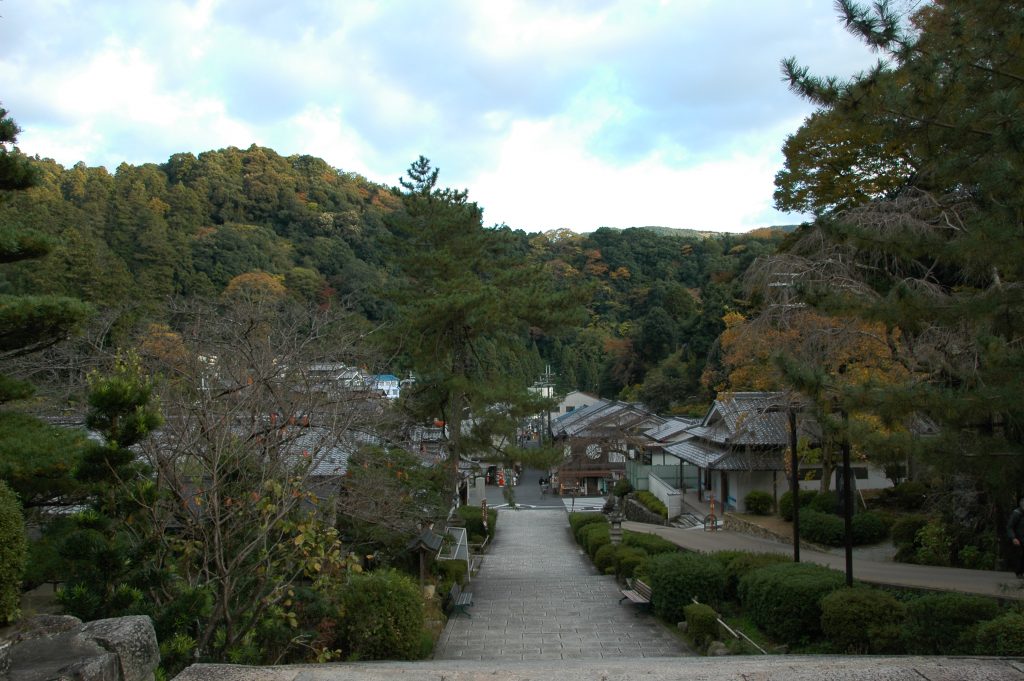
Looking down towards the merchant street below Hase-dera.
Access:
Hase-dera is located in Sakurai City, Nara Prefecture.
Although requiring a bit of effort to reach, Hase-dera is thankfully not difficult to access as there is a train station (Hasedera Station) within a 15 minute walk of the entrance. The temple is also part of the Yamanobe-no-michi Path, which is a great hike for those looking to spend a day or 2 exploring the eastern side of the Nara Basin.
Price*:
500 yen for adults,
250 yen for children
Hours*:
April – September: 8:30-17:00
October – November & March: 9:00-17:00
December – February: 9:00-16:30
*For the most up-to-date pricing and hours, please check Hase-dera’s official website or contact the temple directly.
Looking for even more info about Hase-dera? Feel free to contact us here at Kansai Treasure Travel.

01
FIND YOUR FAVORITE
TRIP ON OUR WEBSITE.
SEND US AN INQUIRY.

02
PERSONALIZE THE TRIP
TO YOUR INTERESTS
WITH OUR CONSULTANT.

03
20% DEPOSIT TO CONFIRM.
BALANCE PRIOR TO ARRIVAL.
PAYMENT BY CC OR TT.

04
WE WILL
MEET YOU
AT THE AIRPORT.

05
DISCOVER THE
TREASURES!